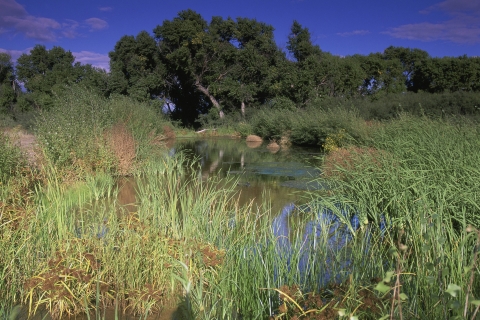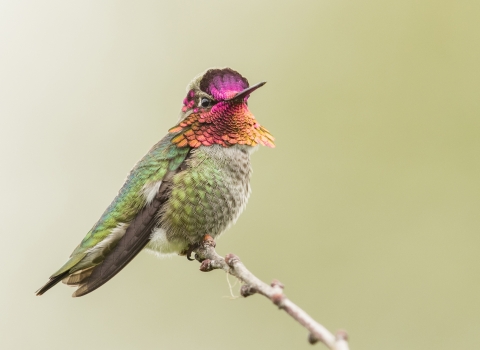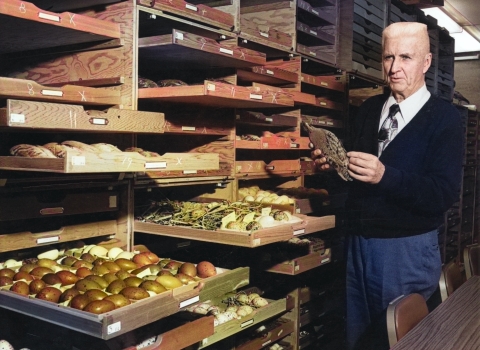An isolated habitat
Fish in the desert? It seems impossible but not in the ciénega habitat. Ciénega is a Spanish word derived from its literal translation “hundred waters” or “cien aguas”. These isolated, spring-fed wetland oases support unique and diverse plants and animals in the middle of otherwise dry landscapes. The types of vegetation that can grow in a ciénega are limited and unique due to constantly saturated soil and evaporation that leads to salty conditions. These plants slow waterflow from flood waters and prevent erosion in the surrounding areas. Desert pupfish, an endangered species of minnow, can be found in these habitats. Living in the desert requires adaptations to harsh conditions. Desert pupfish have been known to withstand conditions like low oxygen levels, high salinity levels and extreme high temperatures allowing them to live in habitats like ciénegas. Ciénegas also support several bird species year-round, in the winter or during migration. When migrating through arid regions, these wetlands serve as a pitstop for many birds in search of food and water.
Experience the ciénega
Buenos Aires National Wildlife Refuge in Arizona is home to Arivaca Ciénega and its diverse wildlife. The ciénega supports fish and a variety of birds like wintering geese, resident gallinules and migrating sandpipers. At the refuge, the Arivaca Ciénega Trail offers a boardwalk for an up-close experience with the rare wetland. Also in Arizona is San Bernardino National Wildlife Refuge, which contains a ciénega that was once the largest wetland in northwest Mexico. Wildlife relies on this ciénega as a stopover when migrating between Mexico’s Sierra Madre Occidental and the Rocky Mountains.
History and conservation
Historically, ciénegas were an important resource for travelers and Native Americans but today, few ciénegas remain due to human consumption and changes in the climate. Conservation and preservation of these wetlands is crucial to the biodiversity that they support. San Bernardino National Wildlife Refuge was established in 1972. The restoration process began with the removal of cattle and undesirable plants. Because this habitat is unlike any other, little was known about how to approach restoration. Starting in 1984, structures called gabions, wire baskets filled with rocks that function as dams, were built with the purpose of increasing vegetation and in turn, wildlife populations. Data collected over a 12-year period shows an increase in plant cover and species. The results support that long-term restoration is possible for the rare and important ciénega habitat.
Today, ciénegas continue to provide habitat for unique plants and wildlife. Restoration and preservation efforts are ongoing to ensure the health and longevity of these desert oases.




